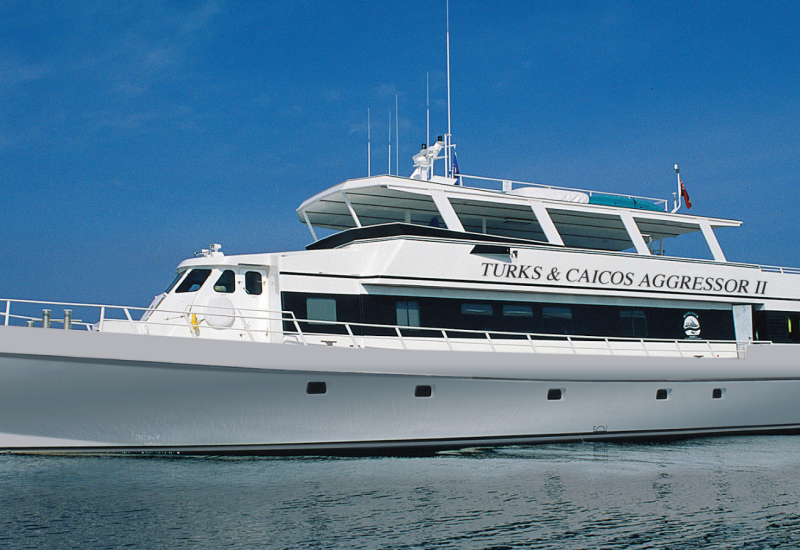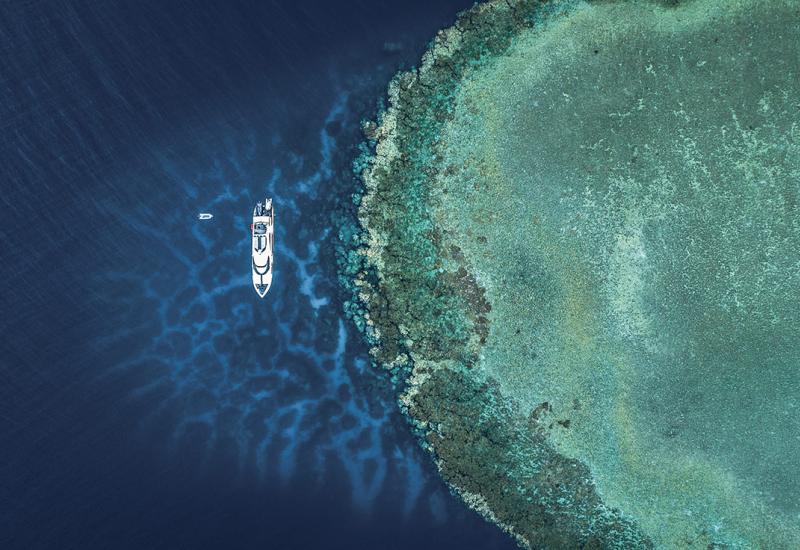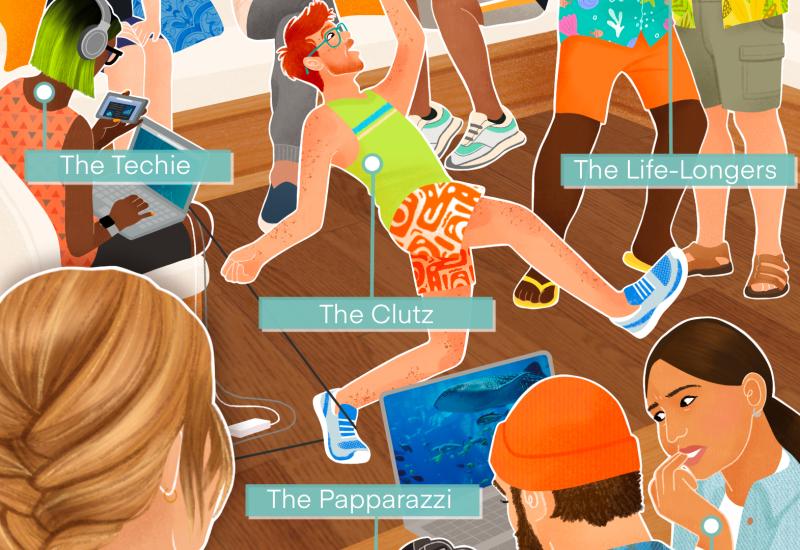Scuba Diving the Marquesas on the Itemata Liveaboard Cruise Ship
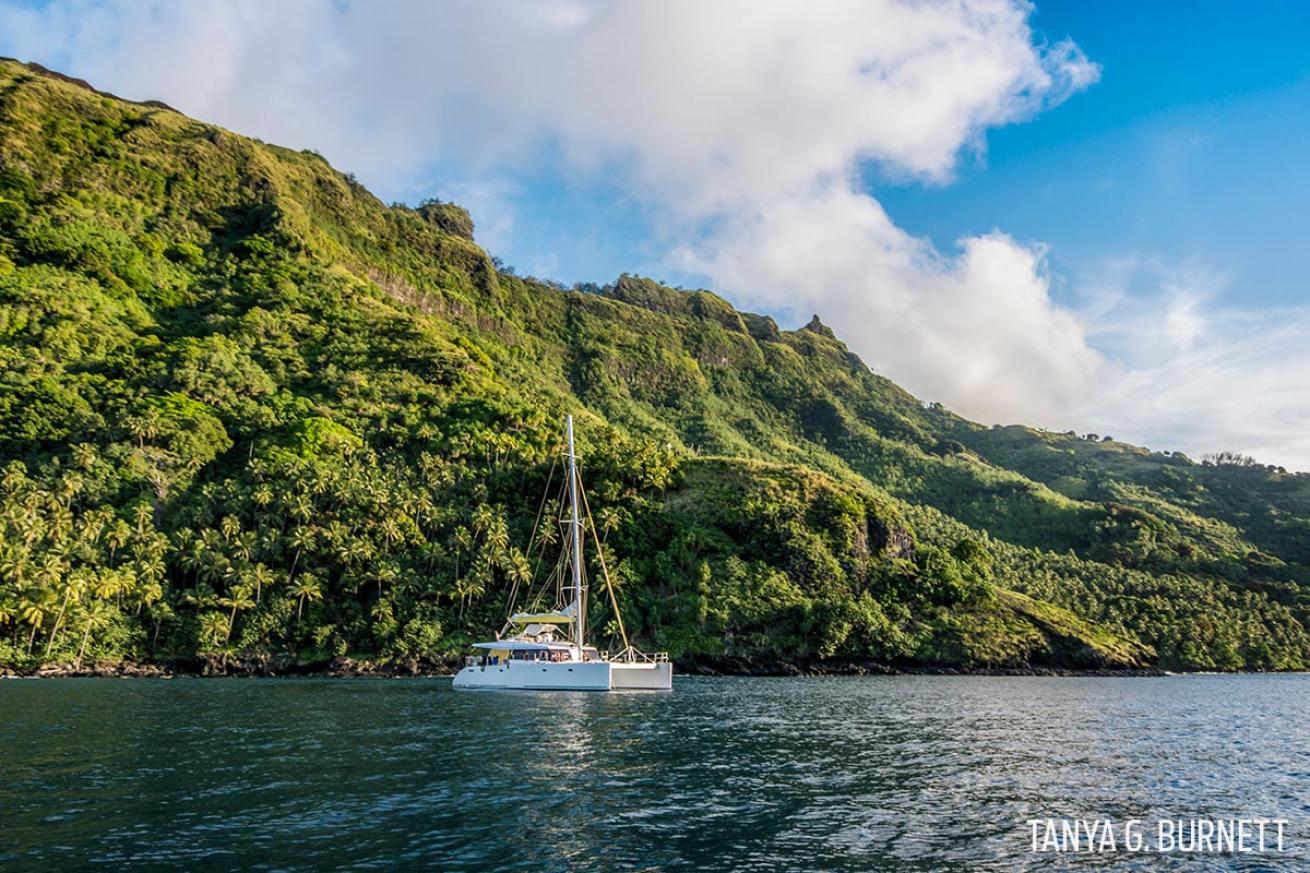
Tanya G. BurnettSET SAIL
Sixty-foot catamaran Itemata, which carries just five divers, lies at anchor in an idyllic bay off Tahuata in the Marquesas Islands.
WHEN TO GO: Itemata sails year-round, except February, when dive sites might be affected by strong westerlies.
DIVE CONDITIONS: Water temperatures in summer months might be as high as 84 degrees F, in winter as low as 77 degrees F. During the wet season, visibility increases due to the prevailing currents. Even though the wet season lasts only two to three months, the visibility is generally high from June into October. From November through May, visibility drops slowly and seems to offer a different variety of macro subjects.
OPERATOR: Itemata has four double cabins, all with private bathrooms, for up to eight passengers, but the number of divers allowed on board is limited to five plus a dive guide. Meals are offered family style, and cater to most diets upon request. There is no air conditioning on board, only a fan. Itemata offers special itineraries to the Tuamotus and Marquesas islands.
PRICE TAG: A seven-night Marquesas charter with up to three dives per day runs roughly $3,000 per person.
READ MORE: The Best Shark Diving in Tahiti
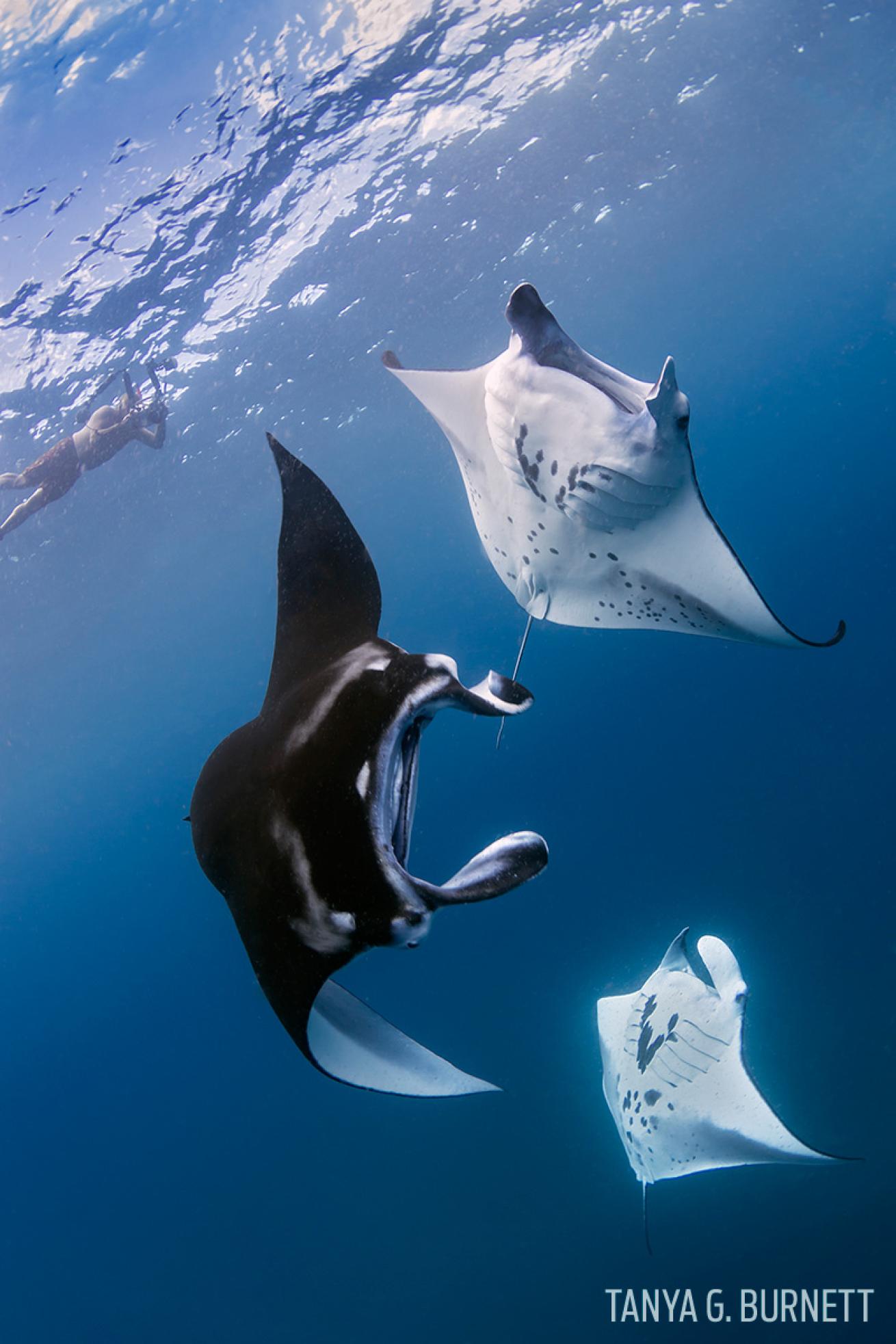
Tanya G. BurnettSCHOOL OF RAYS
Playful mantas swim in the waters of the Marquesas Islands.
Welcome to the Marquesas
Our inflatable dinghy pulls up to a sheer cliff where rock and water meet in an explosion of white foam generated by swells crossing the vast southern Pacific Ocean. We are just around the corner from our protected mooring in the huge Bay of Taiohae on Nuku Hiva, one of the mystical isles of the Marquesas.
Our French dive guide, Eric, quickly counts out loud in his native tongue: “Un, deux, trois — go!” Five of us back-roll in unison — I immediately hear regulator yelps as I get a quick glimpse of a scalloped hammerhead curiously eyeing us. Descending the steep basalt and rock slope to a sandy bottom at 65 feet, I watch the dance of tropical marine life, a mix of old favorites and species new to me. Following a parade of fusiliers, clusters of cardinalfish and vanishing fire dartfish, I suddenly spot a juvenile lemonpeel angelfish, a gem I have rarely seen. I valiantly try to photograph this little electric yellow and iridescent blue escape artist as it darts between pink coralline algae-encrusted rocks. Giddy frustration mounting, I glance up to notice a manta ray soaring so close that I involuntarily duck. Such was my introduction to Marquesas diving.
Adventures in the Islands
Sailors intent on crossing the Pacific often make first landfall in the Marquesas. While someday I hope to make that journey, I didn’t have the 20 to 30 days required for the voyage from South America. Fortunately, it’s an easy flight from the U.S. to bustling Papeete, Tahiti, and then a much shorter one to relaxed Nuku Hiva, where I joined a small group of avid divers on Itemata, a beamy 60-foot liveaboard catamaran. Our mission was to cruise to a few of the 15 Marquesan islands collectively known as Te Henua Enata, or Land of Men. We accepted that the diving would be wild and exploratory — most dive sites are not marked or documented. We would rely on the experience of local Marquesan Sebastian Flotchett and Itemata’s crew, and hand-drawn maps with coordinates and slight descriptions of dive sites from a 1999 expedition.
The views on the 90-minute drive over the mountains to waterfront Taiohae are staggeringly beautiful, with names like Tapu Eahu, a mini Grand Canyon, or Too Vii, a seemingly endless valley in verdant shades of green. Small herds of horses and goats roam, while cows sit along the roadside, barely moving for the rare vehicle heading across the only island road. Along the way, the South Pacific mystique quickly enchants with volcanic visions, exotic scents of wild tiare and kaope flowers along with friendly waves, and shouts of ka’oha (hello) out the windows of the occasional ancient Land Rover. No wonder the post-Impressionist master Paul Gauguin never wanted to leave.
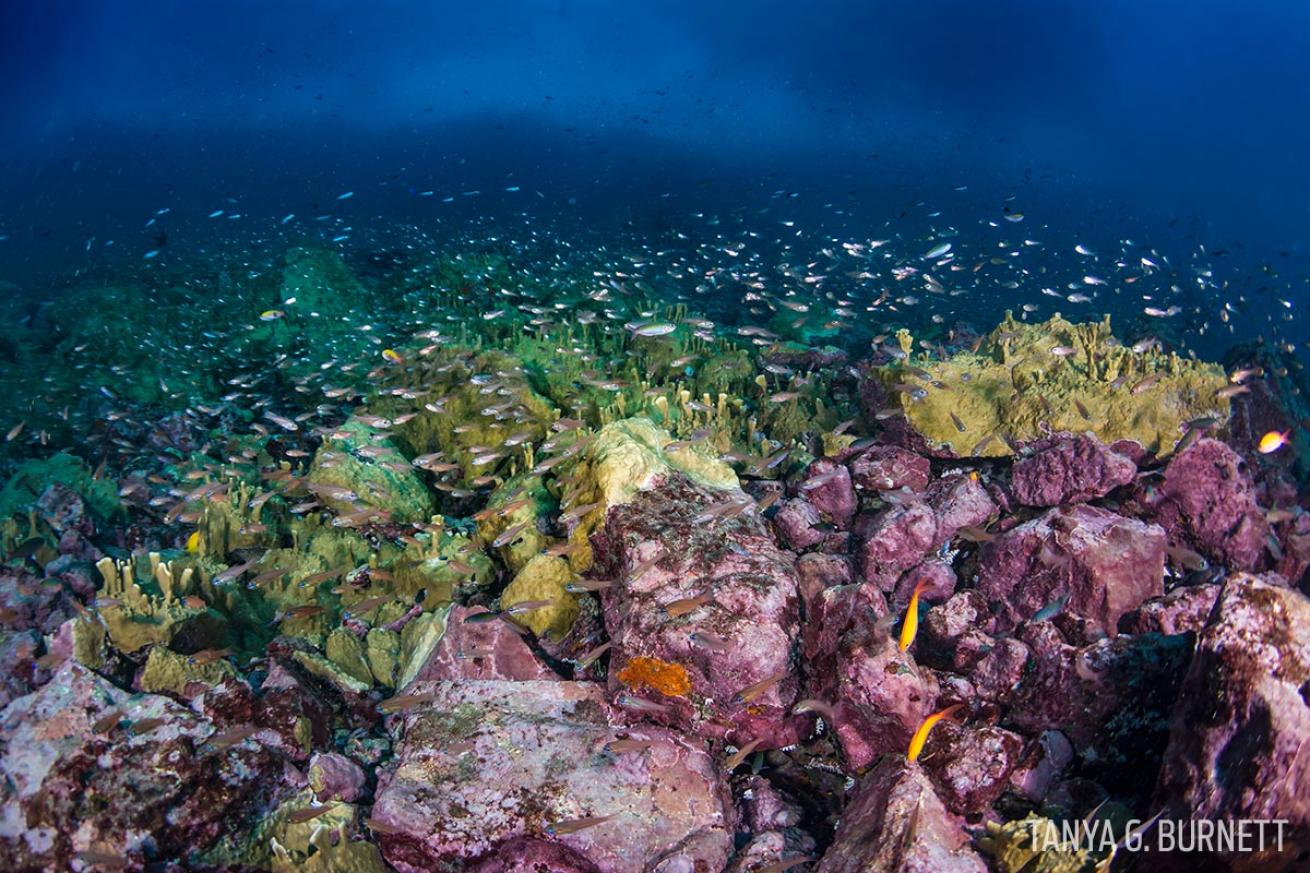
Tanya G. BurnettUNDERSEA RAINBOW
Cardinalfish flutter around a reef off of Nuku Hiva.
Marquesas Scuba Diving Guide
While Capt. Jean-Marie guided our stable vessel to the far-north isle called Eiao, slowly circling back to remote parts of Nuku Hiva, Tahuata and Hiva Oa, Flotchett would fill in our understanding of the region. He explained the Marquesas are a fairly young archipelago, which is partly why they haven’t developed a fringing reef system like their famous cousins Bora Bora and Moorea, and atolls like Rangiroa in the Tuamotus. The dives he chose were mainly in areas without big ocean swell that looked to have clear, blue water. The bottom is comprised of lava rock covered in coralline algae, fire coral and sponges — an often dramatic-looking topography that lights up with color when strobed.
Some stands of a thick-branch acropora coral and a mounding coral are also present, highlighted by schools of blue-lined snapper, sometimes hundreds of fusiliers, and some of the biggest hairy yellow hermit crabs I’ve seen.
We quickly realize these waters are a magnet for pelagic species — big animals are almost guaranteed on every dive. But sometimes I had to trust my gut and go small. One morning we enter Anaho Bay on the north side of Nuku Hiva, justifiably famous as one of the most beautiful bays in all the South Pacific. Everyone is speechless at the vision before us — better than any postcard could convey. But we had come to dive, and promptly take the dinghy to an area we spotted on the way into the bay.
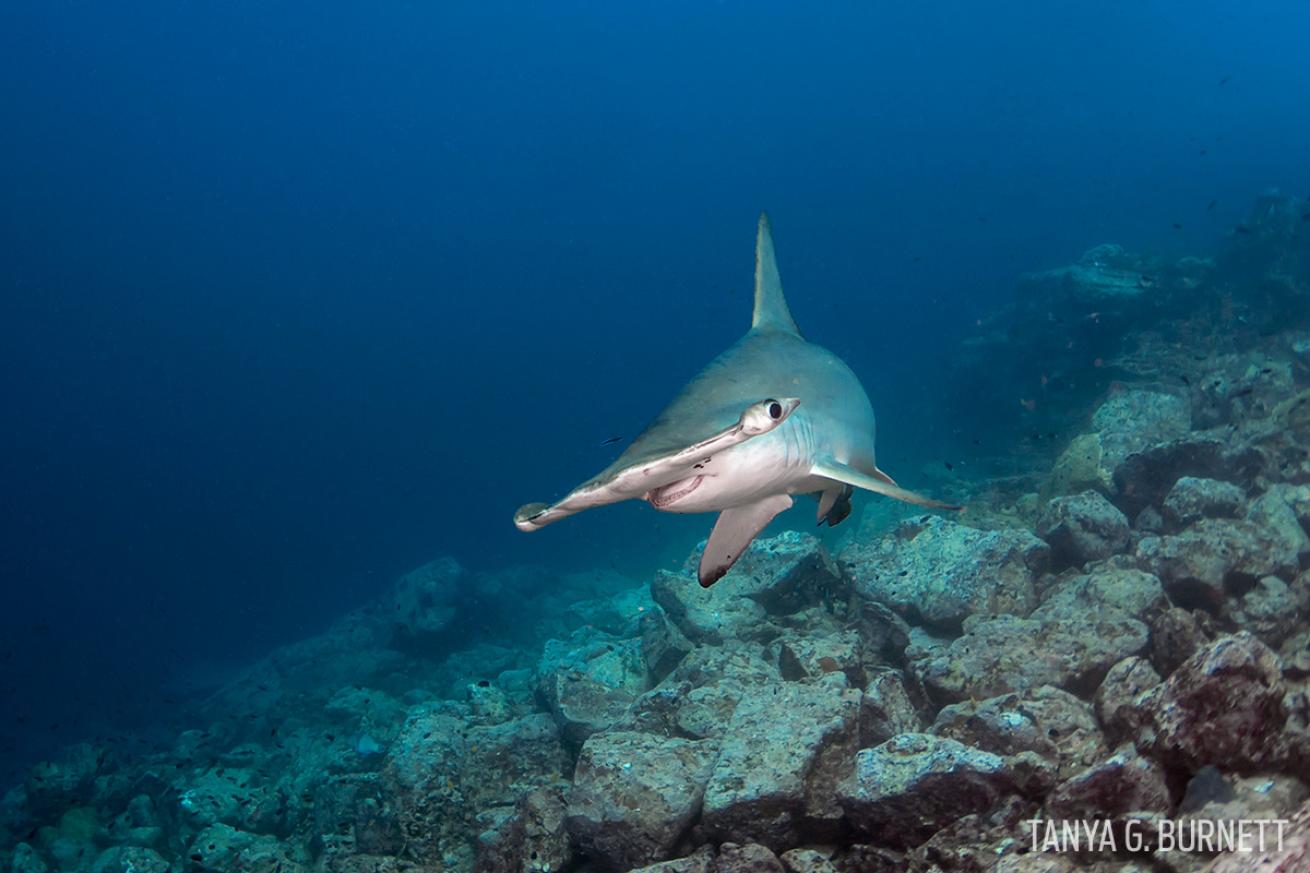
Tanya G. BurnettSHARK SHOW
The Marquesas Islands are home to scalloped hammerheads, many of which you can see while diving aboard the Itemata.
At first plunge, the ubiquitous scalloped hammerhead checks us out, then a silvertip shark gives us a close pass. A tease, but I head for the rocks below. The Marquesas are home to a spectacular denizen I had heard of but never seen: the rare dragon moray.
There are many species of moray here — masked, whitemouth and even a bright yellow dwarf moray — all swaying and gulping while cleaner shrimp and fish attend to their grooming. Then I spot them: a pair of dragon morays with their unmistakable psychedelic patterns and distinctive hornlike nostrils. Their ferocious coloring belies their timid and shy nature, making photography a game of patience as they retire at the slightest threat.
Just minutes after hooting about our successful dragon moray dive, we quickly switch gears as our guide spots manta fins on the surface. Donning snorkels, we jump into a plankton-rich soup where dozens of mantas fly like a synchronized squadron, doing coordinated barrel rolls while they scoop their fill.
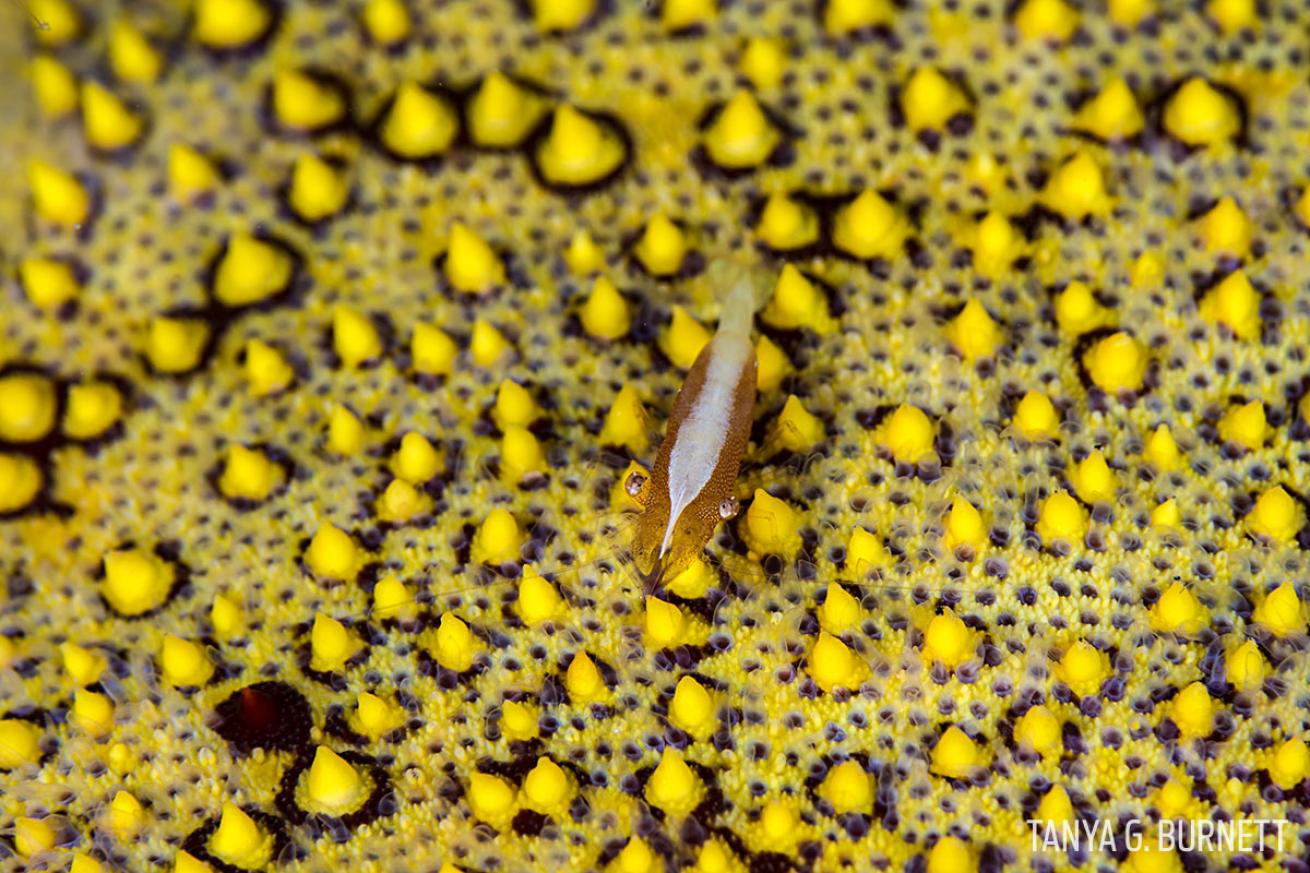
Tanya G. BurnettBLACK AND YELLOW
A sea star shrimp lands on a pin-cushion sea star in the French Polynesian waters of the Marquesas.
The antics go on for many hours, and we stay in the bathtub-warm sea with them until everyone is waterlogged to the core. Exhausted but invigorated, we collapse on the comfortable aft deck of Itemata, drinking freshly squeezed pomelo juice and taking in the breathtaking backdrop of our Anaho anchorage. If escaping civilization is part of your dream adventure, the Marquesas will serve you nicely.
The next day, on our way to Tahuata, we come across a massive pod of melon-headed whales, 400 to 500 animals, and some glorious but brief moments with them in stunningly clear water.
At the end of the day, we anchor in a bucolic little village called Hapatoni, where a high emerald ridge rises over a small valley and coconut-palm-lined shore. By sunrise, morning light glints off a cascading waterfall, while the air is filled with the playful pitch of a huge pod of spinner dolphins leaping around the boat. In the Marquesas, you have to occasionally pinch yourself to ensure you haven’t slipped into some paradisiacal dream — a lovely way to wrap up the diving portion of our trip.
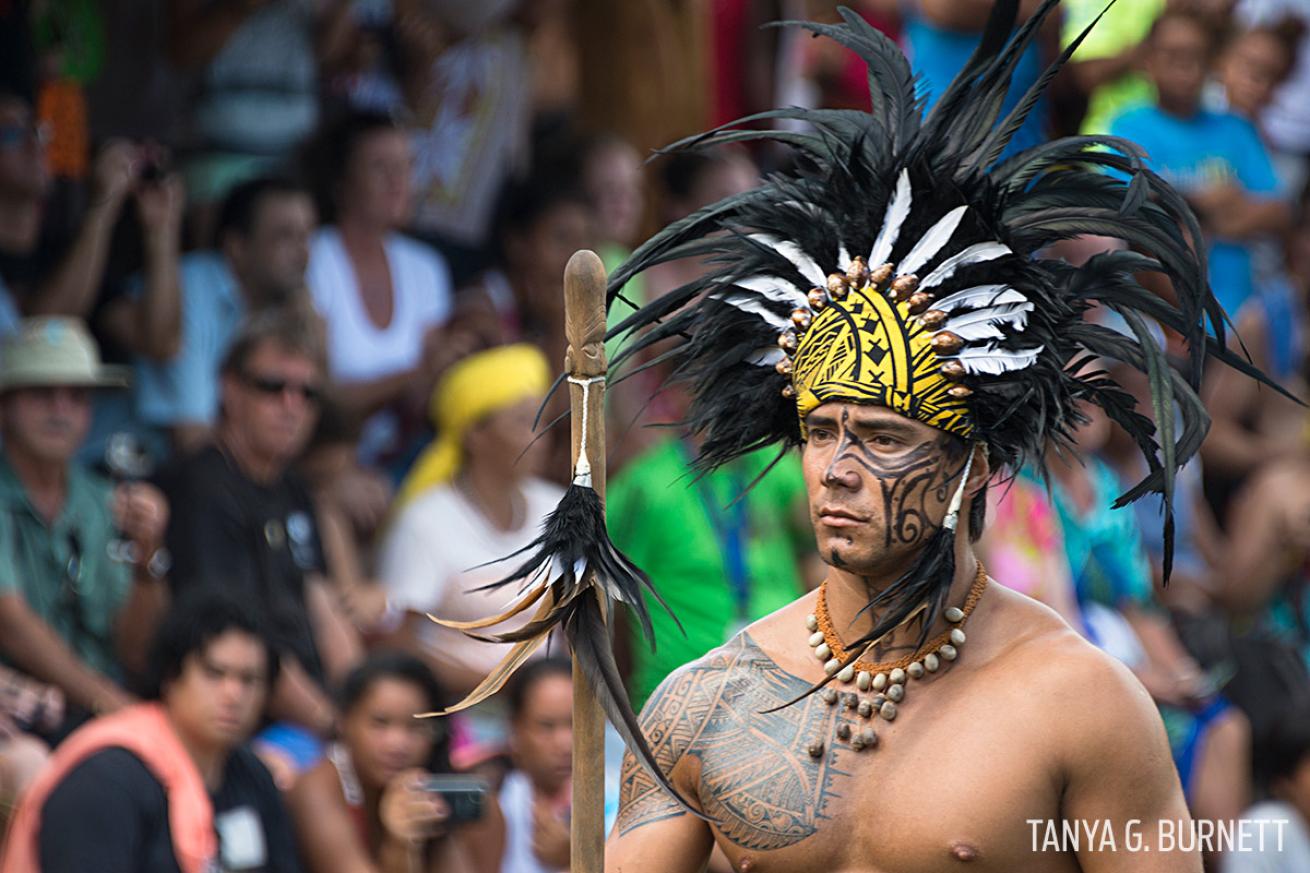
Tanya G. BurnettHERITAGE PRIDE
Drummers, dancers like the one shown and artisans from as far away as Easter Island (Rapa Nui) participate in a celebration of heritage every four years.
Moana and Mana
Marquesans differ from the rest of French Polynesians; they are passionate about their individual heritage. In celebration, every four years they organize a show that isn’t just for tourists. Drummers, dance troops and artisans from as far away as Easter Island (Rapa Nui) participate. Words fall short in describing the intense, intoxicating display of islanders’ deep connection to their culture with vibrant, episodic song-and-dance stories, chanting rituals and tattooing, and in art, with tikis representing their connection to the sea and land.
To Polynesians, there are some words that reflect their deepest core. Moana (ocean) and mana (one’s spiritual force) transcend the differences in all Polynesian languages. The ocean and its animals — the spiritual heart of the Marquesans — are literally tattooed on their bodies. For us, the spirit of moana and mana will forever be tattooed on our memories.
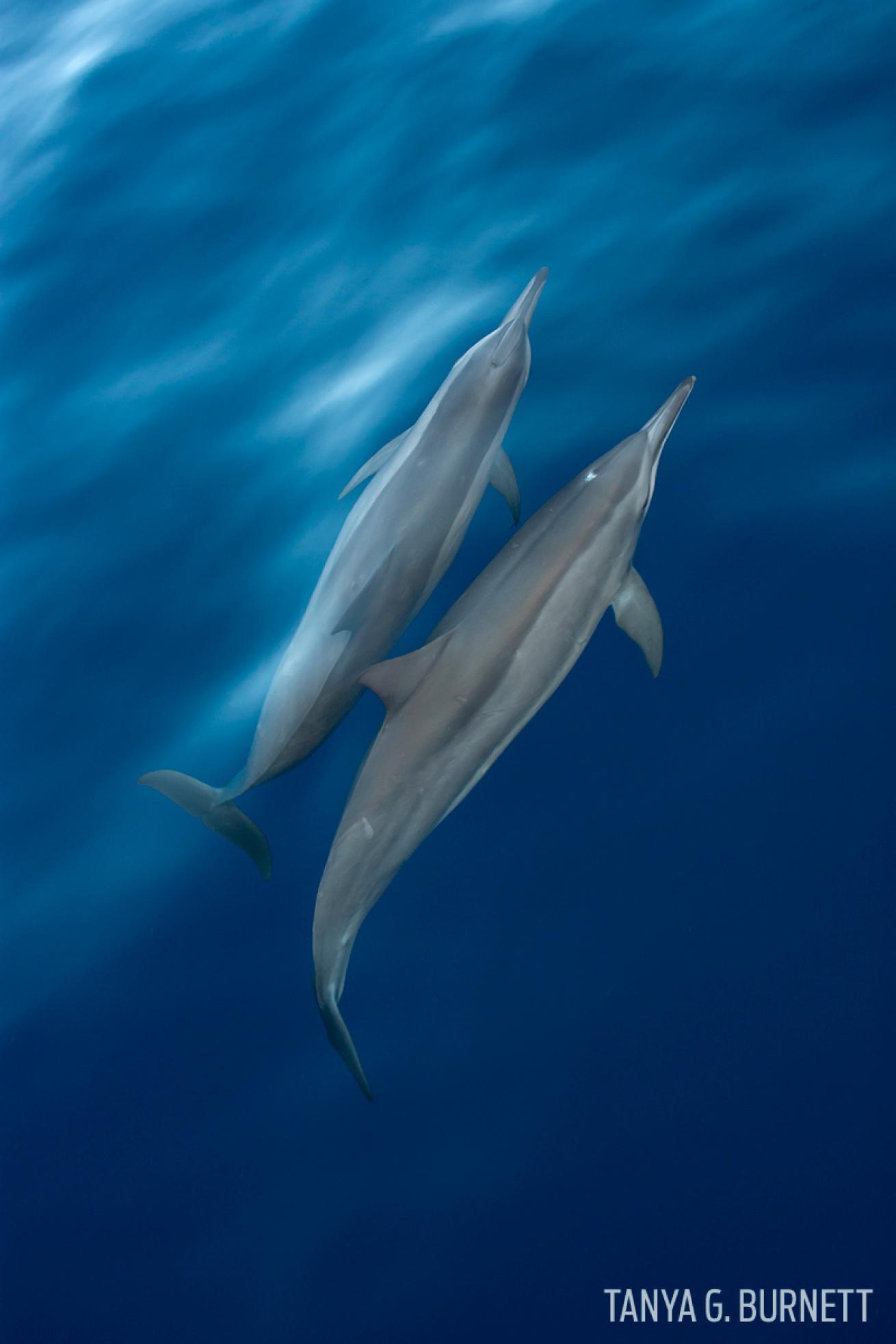
Tanya G. BurnettDOLPHIN DUO
Spinner dolphins glide through the waters near Tahuata.
FIVE REASONS TO DIVE MARQUESAS ABOARD ITEMATA EXPLORE: Freedom to sail around the islands and find unique dive sites and anchorages.
ENCOUNTER: Encounters with mantas, a variety of shark species, melon-headed whales and spinner dolphins.
ALL YOURS: It’s still a destination for the intrepid, with mostly yachties at anchorages.
PRIVATE DIVES: Fewer divers: only five divers to a guide, per French Polynesia law.
OOH LÀ LÀ!: Itemata’s galley is helmed by a classically trained French chef — her natural fruit cakes and crepes sprinkled with coconut sugar are to die for.
Looking for more dreamy destinations? Check out our liveaboard diving and vacation guide.

